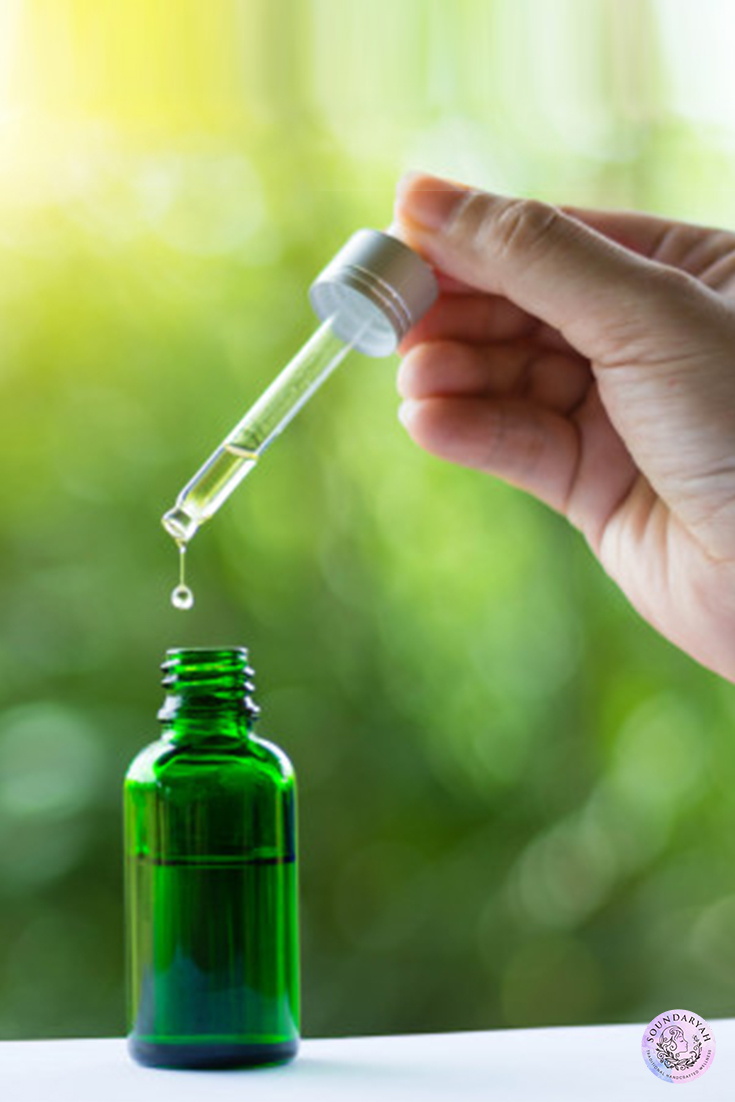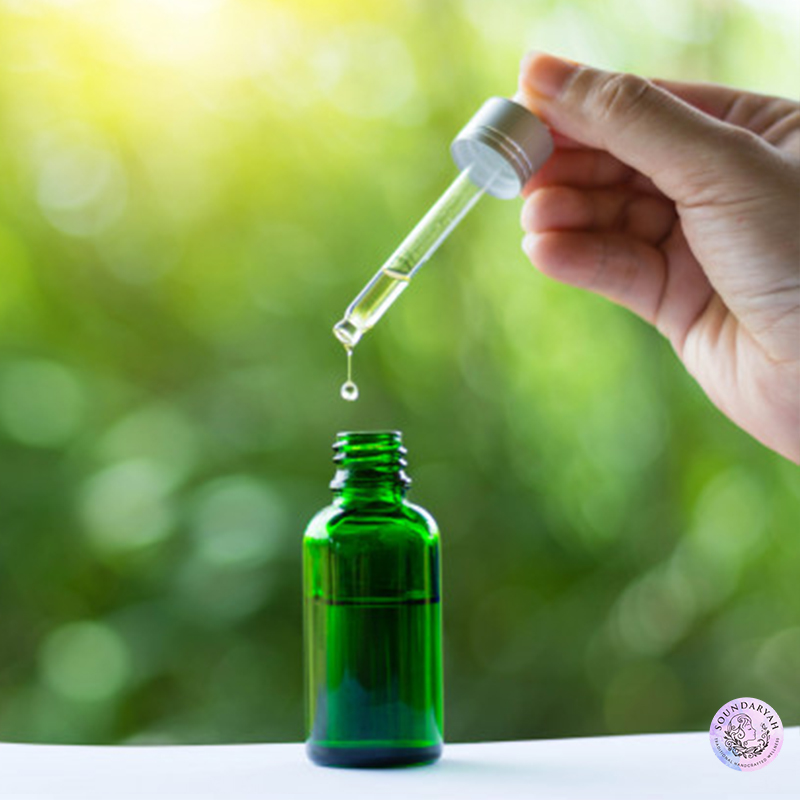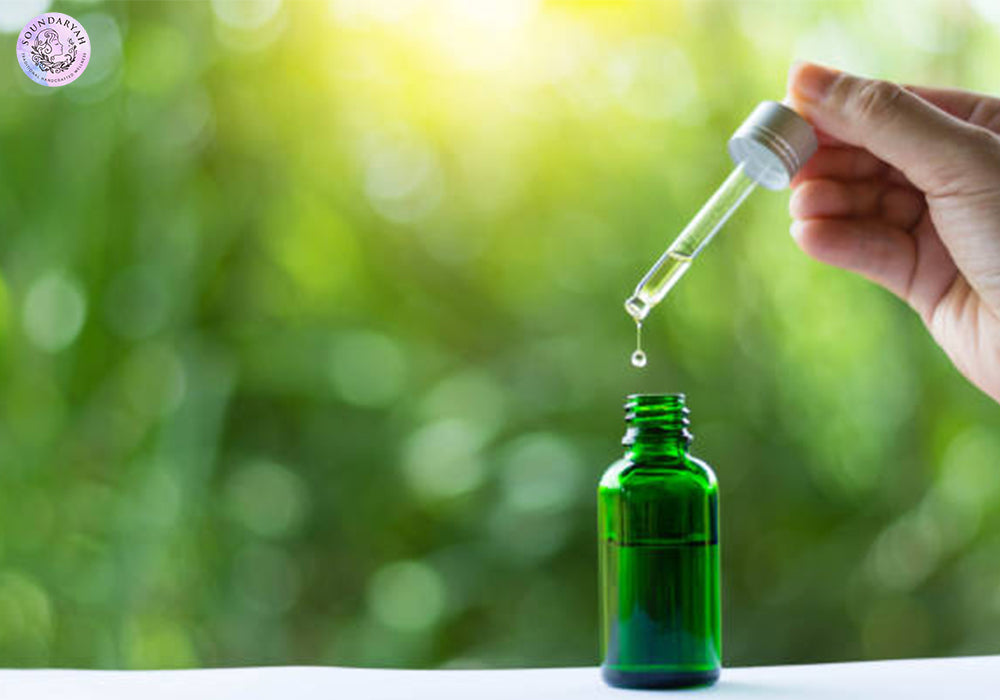The thought of cleansing your face brings to mind an image of something white and foamy all over your face, which you wash off to get skin that’s clean, but also feeling dry and a little stretched. Depending upon your skin type, this can range from mildly dry to irritated skin.
That’s where oil cleansing enters the picture, as a new way to cleanse your skin. Yes, the thought of applying oil to your face can horrify many of us, especially if you have oily, acne-prone skin! However, there is more to oil cleansing than randomly slathering on any oil you find.
What is Oil Cleansing?

Oil cleansing (also known as the Oil Cleansing Method or OCM) is a process of cleansing your skin using an oil or a mixture of oils. The science behind oil cleansing is the concept of ‘like attracting like’. When oil is applied to the skin, it helps dissolve the oil already on the skin’s surface as well as the oil stuck in pores. Heat is used in the form of a warm washcloth, and this opens up the pores, allowing the oil to lift the dirt from them.
Oil cleansing has become increasingly popular these days, with major beauty brands jumping on the OCM bandwagon and releasing specialized products for the purpose. All this sounds very good in theory, but does it actually work? Let’s take a more detailed look at oil cleansing and whether it’s worth the hype.
Is Oil Cleansing Good for You? Here’s Everything You Need to know

Contrary to what some of us may think, oil cleansing does not increase the skin’s oiliness – on the other hand, it is known to balance the skin’s natural oils and get rid of pollutants, makeup and other impurities. Here are some more benefits of the oil cleansing method.
Benefits of Oil Cleansing
1. It’s completely natural.
When you buy any kind of skin care product, you need to read the label and decode the long list of ingredients, many of which can’t be pronounced easily. However with oil cleansing, you have just one ingredient – oil! Oil cleansing uses natural plant oils without any preservatives or additives whatsoever. You can even combine oils to create an oil cleanser that’s perfectly suited to your skin.
2. It does a good job of cleansing.
After all, that is what a ‘cleanser’s purpose is, isn’t it? Being insoluble in water, oil can bind itself to impurities and dirt on the surface of the skin and even the gunk that’s clogged in pores. Oil is also ideal for removing makeup, including eye makeup. In fact, many major brands’ makeup removers and micellar waters contain oil, although they also contain preservatives. Oil can even get rid of waterproof formulas, combining the benefits of a makeup remover and a cleanser.
3. It maintains the balance of the skin’s outer layers.
Commercial cleansers often have ingredients that are harsh and mess with the skin’s pH. The skin has a natural acid mantel that acts as a protective layer against dirt and pollutants. However, chemical ingredients destroy this layer, making your skin vulnerable. Oil, on the other hand, maintains this protective coating as well as the skin’s pH levels. It also leaves the good bacteria on the skin’s surface unaffected.
4. It brings oil production under control.
Those of us with oily skin love the oil-free feeling we get right after using a commercial cleanser. However, this ‘dryness’ makes the skin think that its dehydrated, leading to the production of more oil to compensate for it. The result is more oiliness than you started out with! Using an oil cleanser sends no such misguided signals, so your skin’s oil production is kept under control and not triggered into overproduction.

5. It clears acne and prevents breakouts.
In most cases acne is seen in those with oily skin, as well as when the pores get clogged. Since oil cleansing keeps oil production under control and helps lift impurities embedded within the pores, it’s an effective solution against acne and breakouts. Nutrient-rich plant oils replace the dirty oil on the skin, leaving it nourished, clean and healthy from within.
6. It moisturizes the skin.
Oil is well known for its moisturizing properties, and it’s true of facial skin as well. If you’ve had oil baths in your childhood, you’ll remember how supple your skin felt afterwards. Plant oils contain fatty acids that keep skin nourished and hydrated. What’s more, oil cleansers do not leave skin feeling stretched and dry like commercial cleansers do as they do not strip the skin of its natural oils.
7. It has anti-aging benefits.
Mature skin requires special care, and oils are the perfect solution. Oils moisturize the skin, preventing that stretched look which emphasize fine lines and wrinkles. Plant oils also contain antioxidants that fight free radicals responsible for premature signs of ageing. The act of massaging the skin with oil also boosts blood circulation in the skin making it appear plump and youthful.
8. It is convenient and customizable.
Oil cleansing is one of the most sustainable and practical ways to care for your skin. Plant oils are easily available and they are not at all expensive. You can use any combination of oils so that you end up with a completely custom made skin cleanser that is 100% ideal for your skin type and your unique skin issues. The massaging action is also quite relaxing and a great way to include some self care in your routine.
How to do Oil Cleansing

Alright, now that we know oil cleansing is great for your skin, it’s time to see how it can be done. It’s really very simple, but it helps to follow a step by step process to make the most of it and to avoid any wastage of oil. Start with a dry face, even if you have makeup on. The oil will get rid of everything.
You’ll need a glass bottle containing our oil or oil mix, a dropper, a clean, soft wash cloth and hot water.
Step 1: Wash your hands with soap and water. Dry them with a clean towel.
Step 2: Standing over the wash basin/sink, use a dropper to drop a little less than a teaspoon’s worth of oil into your palm.
Step 3: Use your finger tips to massage the oil on your face for 1-2 minutes. If you have eye makeup, apply the oil to the eye lids and eye area and massage very gently. Use small circular strokes for the massage.
Step 4: If you’re wearing heavy makeup or need some deep cleansing, you can leave the oil on the skin for a few minutes after massaging.
Step 5: Wet a clean wash cloth with hot water – as hot as you can manage. Let it get completely soaked.
Step 6: Wring out the washcloth so that it’s not dripping anymore. Place the heated, damp wash cloth on the face. The steam from the washcloth will help loosen up dirt and open up the pores.
Step 7: Leave the wash cloth on for about a minute or till it cools.
Step 8: Use the washcloth to gently wipe away any remaining oil on the skin. This gives the skin a mild exfoliation, but be careful not to rub too hard. Take extra care around pimples or any broken skin.
Step 9: Pat dry with a towel. You will not need a moisturizer after this, but if you think your skin is still dry, you can apply one.
Oil cleansing can be done every day, but it’s not recommended to oil cleanse more than once a day. The ideal time to oil cleanse is at night, when your skin has the chance to absorb all the nutrients in the oil while you sleep, so you wake up with gorgeous, radiant skin.
The Best Oils for Oil Cleansing

Choosing the right oil makes all the difference when it comes to the oil cleansing method. You can, of course, buy pre-mixed oils from stores or online, but there are a few problems with this. One is that they often contain preservatives to increase the shelf life or for added fragrance or color. Another problem is that the ratio of oils they’ve used may not suit your skin.
However, when plant oils are so easily available, you can easily make your own mix at home. Before you do that, you need to know the benefits and properties of different oils, so you can combine the right ones. Always go for non-comedogenic oils that won’t clog your pores.
The most common oils used in oil cleansing are olive oil and castor oil. You can start with these and add on other oils as you go. It’s best to add essential oils later, once you’ve figured out which oils work best for your skin type.
Dry Skin: Coconut oil is a popular choice for people with very dry skin. Sunflower oil also helps improve hydration with its linoleic acid content. Other oils that help boost hydration are shea and argan oils.
Oily Skin: Oily skin needs oils that are naturally astringent, like castor oil or hazelnut oil. Essential oils that help oily skin are tea tree, peppermint and rosehip oils.
Combination Skin: Since this skin type has both oily and dry patches, olive oil works best for combination skin. You can also add in some Vitamin E for added benefits.
Once you’ve figured out the oils suited to your skin type, you can move on to looking for oils that treat any specific skin conditions you may have.
Acne: Acne prone skin generally has low levels of linoleic acid, so oils with high linoleic acid can help, such as jojoba oil and grapeseed oil.
Ageing: Argan oil is a great oil for visible signs of ageing, like fine lines. It is packed with antioxidants that fight free radicals and improves the elasticity of skin.
Eczema: Virgin coconut oil is the most soothing and effective solution for skin that’s prone to dry-skin conditions like eczema.
Irritation: If your skin is irritated and needs some soothing, go for avocado oil that is high in oleic acid and very hydrating. However, if you have acne-prone skin, you may want to avoid it.
Stretch marks/Hyperpigmentation: Sweet almond oil is perfect to improve skin complexion and get rid of hyperpigmentation and other marks or scars.
Sun Damage: Sun damage is one of the leading causes of premature skin ageing, and soyabean oil is a great solution for this. It has properties that specifically fight against UV radiation damage. You can also use peanut oil as a preventive measure against sun damage.
Things to Remember

While oil cleansing is a fairly simple process and does not need too many ingredients, there are still a few things to remember before you start.
- Always use a clean wash cloth and wash your hands well with soap and water before cleansing.
- Avoid using facial cleansing brushes with oil, especially silicone brushes.
- If including essential oils, always start out with a very small quantity and do not use them on the eye area.
- Do not oil cleanse more than once a day.
- Always do a patch test on a part of your face like behind the ear before you apply the oil all over your face.
- If you suffer from cystic acne, consult your dermatologist before starting oil cleansing.

If you experience some minor irritation or breakouts when you start oil cleansing, it’s okay. Oil cleansing generally causes purging in the initial phase, but this settles down in a few weeks. If you notice severe reactions, you may need to change your oil or oil mix.

Did you find our “Is Oil Cleansing Good for You” interesting, please let us know in the comments section.
For more interesting updates do follow us on Facebook and Instagram.


 Verified Purchase
Verified Purchase



![Youthful Glow Herbal Face Wash [100g] - Soundaryah](http://soundaryah.com/cdn/shop/products/1a_b5d64eda-7417-41b9-bad5-b271f4ef68ff_300x.jpg?v=1634899930)
![Royal Herbal Hair Wash [200g] - Soundaryah](http://soundaryah.com/cdn/shop/products/1_300x.jpg?v=1669120964)
![Intensive Body Polishing Ubtan [200g] - Soundaryah](http://soundaryah.com/cdn/shop/products/1a_8728dcb7-c696-447d-b42e-0a56a5326fb6_300x.jpg?v=1634899848)